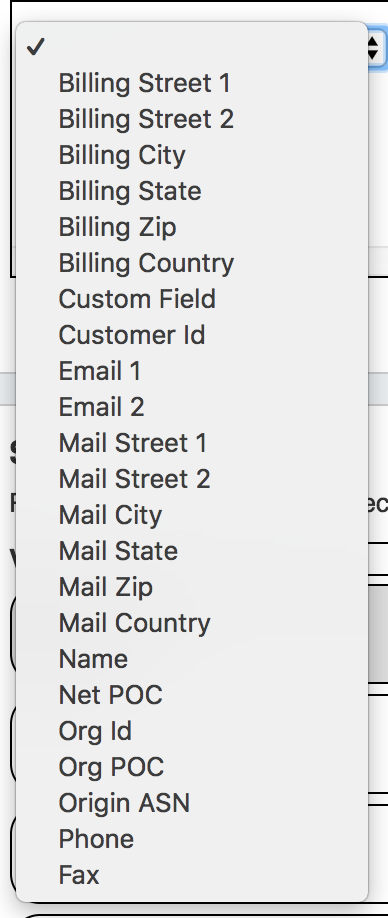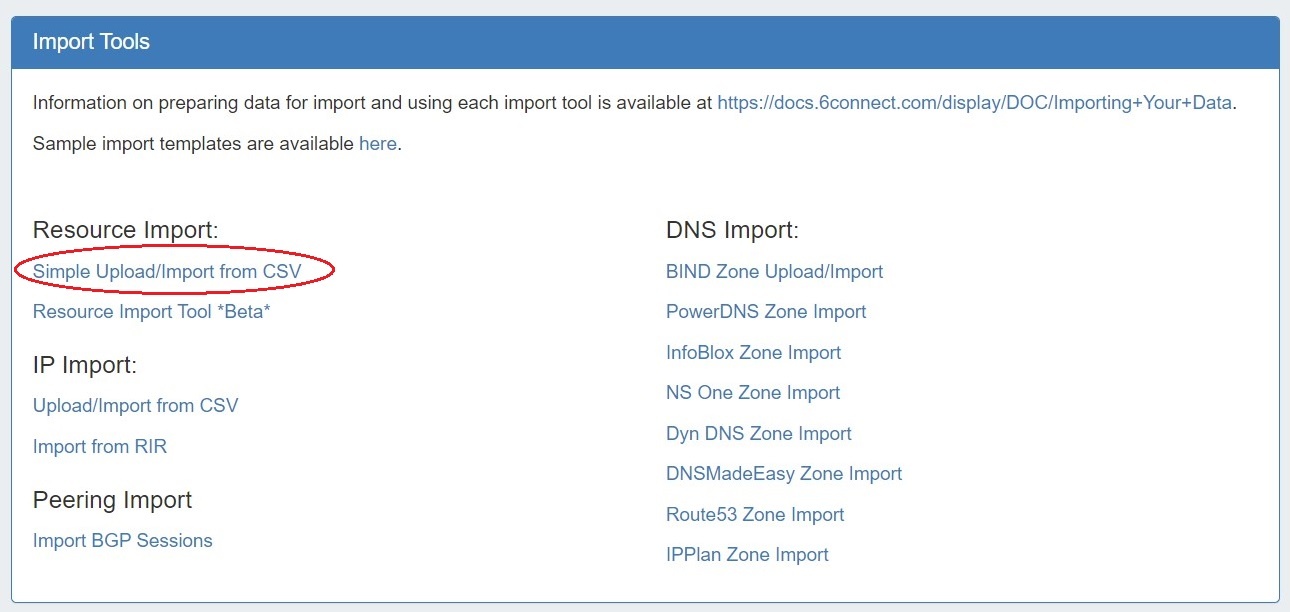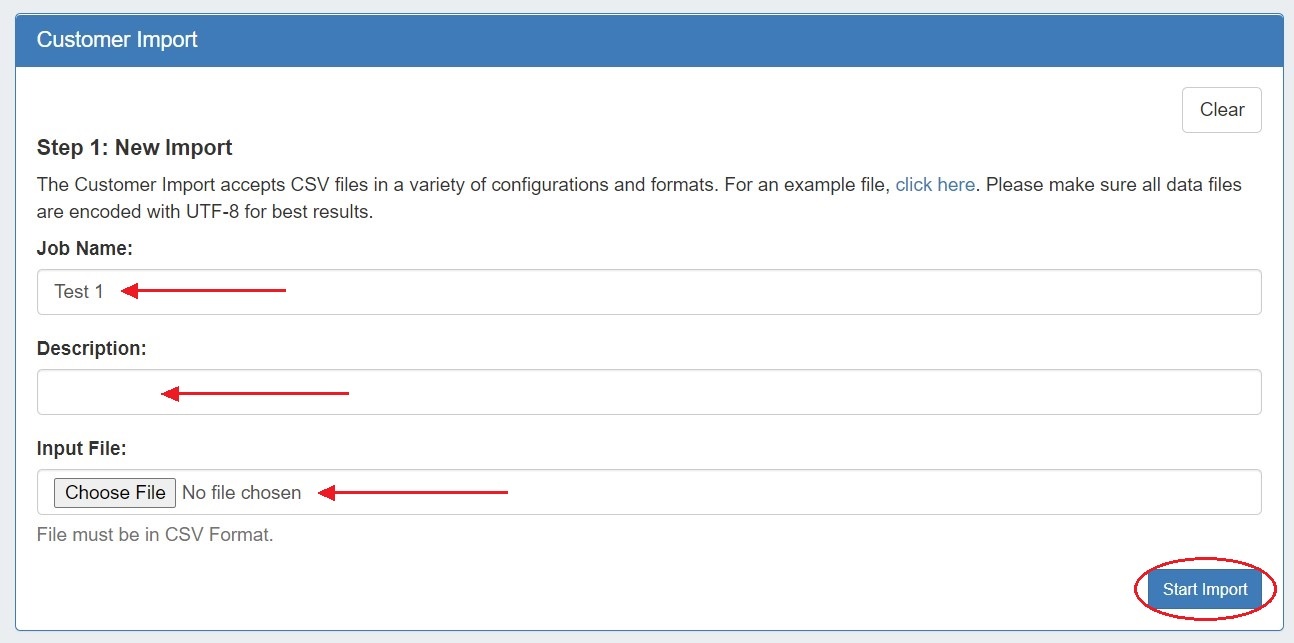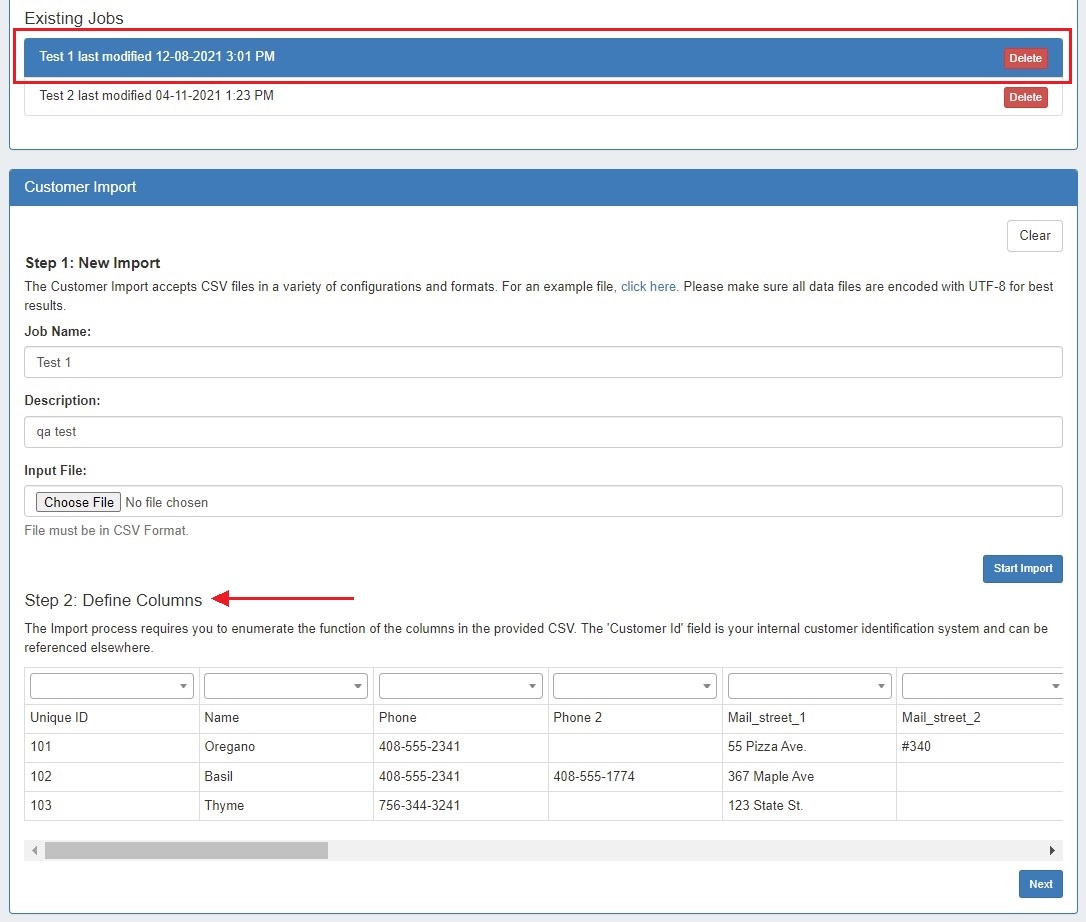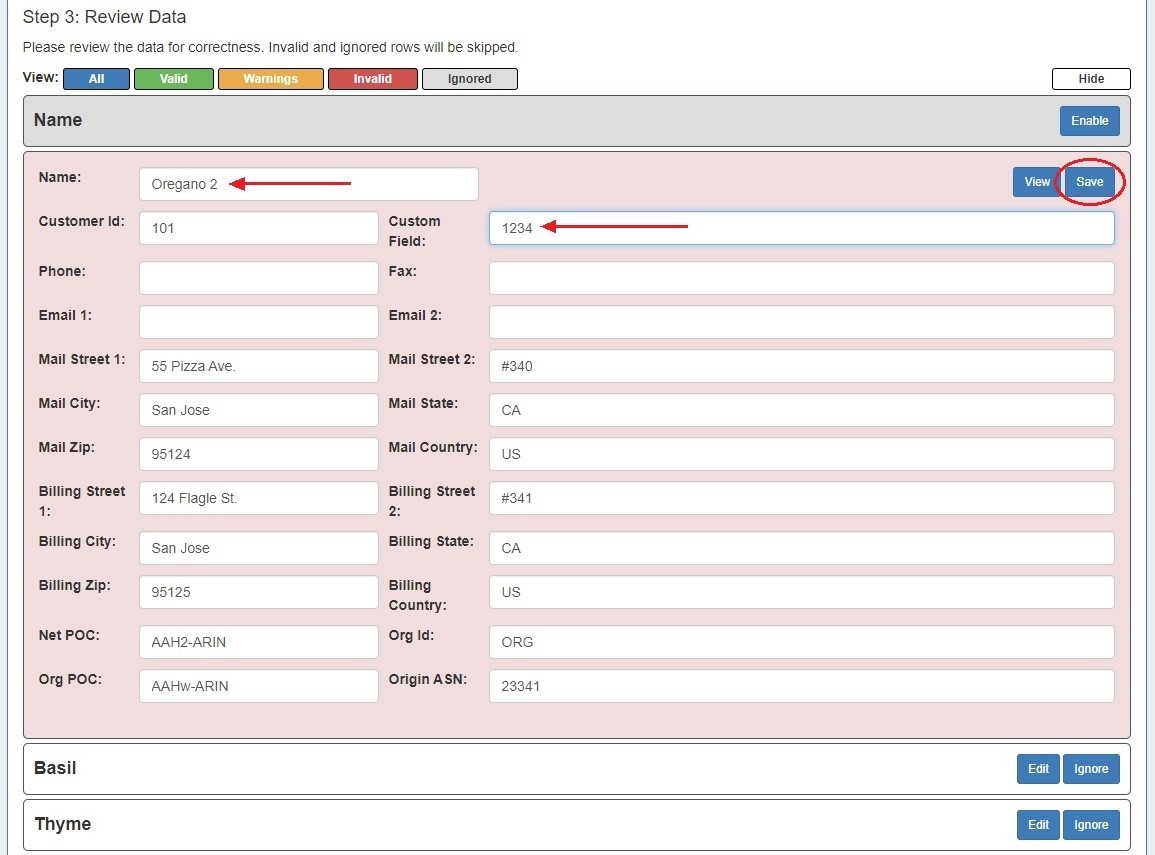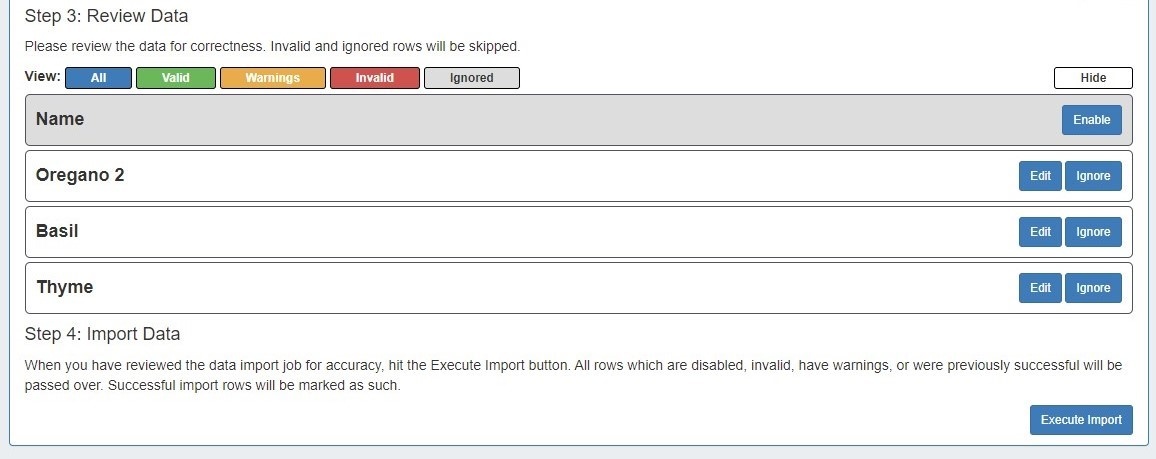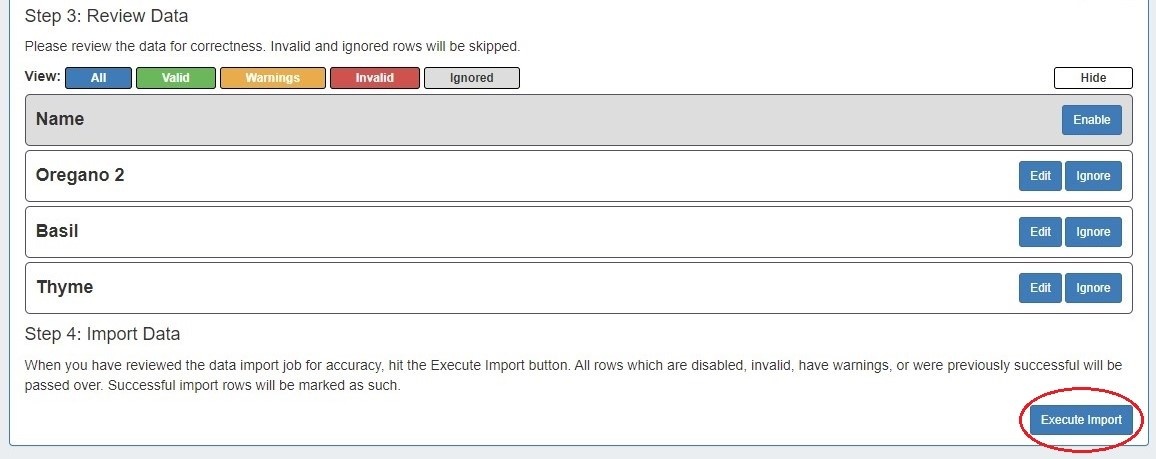| HTML |
|---|
<div id="google_translate_element"></div>
<script type="text/javascript">
function googleTranslateElementInit() {
new google.translate.TranslateElement({pageLanguage: 'en'}, 'google_translate_element');
}
</script>
<script type="text/javascript" src="//translate.google.com/translate_a/element.js?cb=googleTranslateElementInit"></script> |
Simple Upload / Import from CSV
The Simple Upload / Import from CSV tool is used if you have a simple .csv file with customer / contact information, such as Name, Address, Billing Address, Phone numbers, POC, etc. It is accessed from the Data Import Tab from the Admin section of ProVision.
To import your customer / contact information, follow the following steps:
...
Be sure to review "Preparing Data for Import" on the Importing your Data page before you begin. Verify that your .csv is correctly parsed and cleanly formatted with your customer/contact information (using your choice of the available field list shown below), and is UTF-8 encoded for best results.
Be sure to check that your data is cleaned up with the following steps:
- Remove any empty rows in the data range
- Remove any empty columns in the data range
- Remove stray data from inside and outside the data range, such as:
- notes, comments, and placeholder text as field values, when not set as their own data column
- nested secondary information located in additional rows under a primary record
- Ensure proper data formatting
- Check for data formatting errors - a common issue is leading zeros being dropped from a ZIP field when a file is opened. Re-specify format as needed.
- Ensure each field has consistent formatting for values
Ensure unique values for primary identifiers, such as Resource Name and ID Fields
Note title Data Encoding Format To ensure correct importing of any special characters, make sure to use UTF-8 encoding for your CSV file!
This Resource Import from .csv tool supports the following fields:
| Expand |
|---|
Note: the following fields are REQUIRED:
- Name (Unique Resource / Customer Name)
- Customer ID (Unique non-name identifier)
All other fields are optional.
Step 1: Create a new Resource / Customer Import Job
Navigate to the Data Import Tab from Import Tab from the Admin button. Select "Simple Upload / Import from CSV" under "Resource Import".
Create a Job Name and Description for the import. This is especially useful to keep track of progress in cases the data arrives from multiple sources, or will require multiple stages of manual review.
Select the .csv file that you prepared above by selecting the "Choose File" button, and browsing to the correct file location. Then hit "Start Import".
| Note | ||
|---|---|---|
| ||
Although you cannot add new files to an existing job, for jobs with multiple sources for data (which may have different formatting), you can simply create separate jobs and descriptions for each source - no need to manually combine the data into one file before importing. The Import tool's mapping and editing functions will allow for the data to be reconciled in ProVision. For large data sets where multiple stages of manual review might be needed, you can create a new job using the same set of data files in order to work in parallel on a different portion of the data. |
...
After importing, the new job will appear under the "Existing Jobs" section.
To continue working with this job, select it from the list (by clicking on the link) and the next step ("Define Columns") will appear on at the bottom of the page.
Step 2: Define Columns
Using the dropdown menu above each data field, select the appropriate definition for each of the imported columns. Phone and Fax may have multiple columns associated with the data. Other columns which do not apply under the available definitions should be left as blank, and will be skipped during the upload process.
Note: the following fields are REQUIRED:
- Name (Unique Resource / Customer Name)
- Customer ID (Unique non-name identifier)
Make sure that you have defined all desired fields by using the scroll bar below your data to view additional columns.
When completed, hit "Next".
Step 3: Reviewing Data
...
| Tip | ||
|---|---|---|
| ||
If your .csv has a header row as the first line, that row will be shown as the first record in review data as well. Simply click "Ignore" on the first record to disregard the row. |
For rows with an "Invalid" or "Warning" status, you may wish to edit the record to change information to a valid option.
Hitting the "Edit" button for the record provides options to change or add information for available fields.
In this example, as "Name" was the invalid field, it has been updated to a unique value. The "Custom Field" value has been added as well.
After editingmaking the desired edits, hit "Save", and continue reviewing / editing data as desired..
The data record will be re-checked for validity, and will have a white background if it is now valid for import.
After data has been reviewed for accuracy, you may execute the import.
Step 4: Execute Import
When the review step is completed, hit the "Execute Import" button.
A progress bar will appear to show progress and note errors if they occur.and display the records as they are imported.
When the bar reaches 100%, and displays "Current Step: Finished!" the import is complete, and you may leave the page.
Additional Information
For more import options, see:

